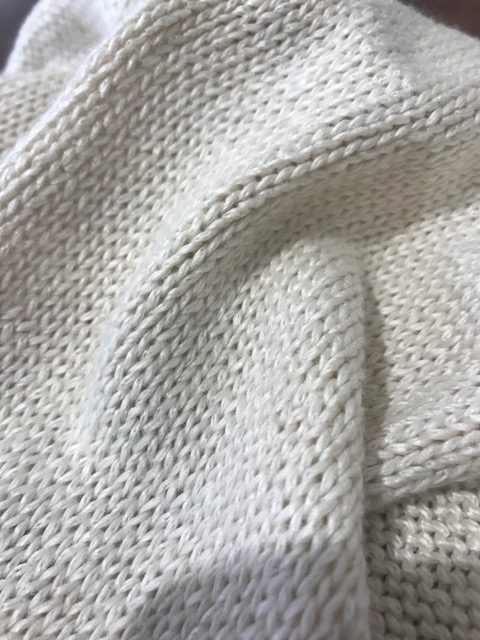KNIT MAGAZINE
About mercerization / mercerize finish

- Post date:
- December 21, 2018 07:00
KNIT MAGAZINE


We translate with Google Translate. You can contact us if you have any question.
Hello everyone, this is Matsui. A fairly late winter has finally arrived. This year is also called a warm winter as a whole. Maybe because there were days when the temperature was 20 ° C during the day until recently, it feels even more severe when it comes to winter.
Today I would like to touch on mercerized processing / mercerized processing.
To put it simply, mercerizing is a processing method that mainly tries to give luster to cotton materials.
He is also called mercerized processing because J. Mercer of England invented this processing, but he is commonly called mercerized processing in Japan.
By the way, regarding this processing, when checking on the net, there is a description in most cases that it is treated with caustic soda, the yarn is stretched, the fiber cross section is adjusted, and a glossy feeling is released.
This process is not limited to cotton materials, but in most cases only 100% cotton materials are processed and threads and jerseys are available. Especially in Japan, I think that the thread that is generally distributed is almost 100% cotton.
This mercerized processing is actually not a type of application, but can be roughly divided into three types.
The three types are the so-called “Kasejiru”, which is processed in the form of a skein in the state of the thread. There are three types of “anti-jil” that are processed into a piece of cloth instead.
Occasionally, you will see a process called “double mercerized”, in which a piece of cloth is mercerized with thread and then processed again even in the state of a piece of cloth.
The main purpose of this processing is to give it “gloss”, but he arranges the naturally formed cotton fiber cross section as a structure that produces that effect by the action of chemicals and tension, and reflects the light of the fiber itself. To make it better
In addition to the effect that this processing produces luster, he also has the following characteristics as advantages / disadvantages.
○ Improved color development: By adjusting the cross section of the fiber, the adsorptivity of the dye is improved. Compared to normal cotton thread, the color development is increased and bright colors can be expressed.
○ Changes in texture: Since the fiber cross section is adjusted and the original fluff of cotton yarn is reduced, the texture will be a little sharp and sticky when compared to the unprocessed one. I feel that the swelling of the knitted fabric is also somewhat cleaner than the original cotton.
○ Caution for the fastener phenomenon: This effect is close to the fine count fine gauge, but this phenomenon is unlikely to occur with ordinary cotton, especially for his mercerized cotton fine count, this “fastener phenomenon” so-called knitted fabric. It is easy to get stuck. It is sometimes confirmed that most of the causes are so-called “static electricity”, which increases the chargeability of knitted fabrics and products and makes them easier to stick to each other.
Generally, it is a symptom that the front body and the back body stick together when a product such as a pullover is placed flat.
that’s all. I hope you can refer to it as much as possible.
Subscribe Now
To receive the latest updates and insights, subscribe to our newsletter.
Contact Us
For further inquiries regarding this article, please feel free to contact us.